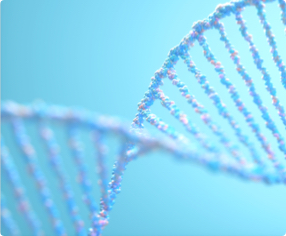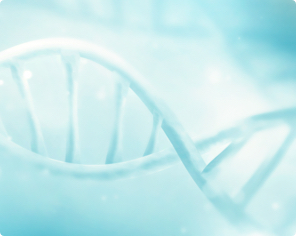Navigating difficult conversations in ALS
Supporting patients living with ALS / Navigating difficult conversations in ALS
A diagnosis of ALS can be difficult to deliver
Patients may be in a state of shock, wondering how they have developed ALS and what it means for them. ALS experts, aren't always able to answer all of these questions as the causes and/or prognosis of ALS may not always be clear.1,2
So how can healthcare providers offer an accurate explanation of the complexities behind ALS while maintaining a sense of compassion? More importantly, how can the physician and patient turn these conversations into ones of mutual understanding? Caroline Ingre, MD, PhD, who leads the ALS research program at Stockholm’s Karolinska Institute, shares some insights from her own experience.
Searching for objective truths—a unique patient story
Dr. Ingre listened as a patient explained her frustrations. A tightness that began in the patient’s shoulders years earlier had led to countless visits to different specialists, and eventually an ALS diagnosis. Finally, a blood test at Karolinska uncovered a genetic mutation that could be associated with the diagnosis: a repeat expansion mutation in C9orf72.2
The patient, visibly upset, had researched the disease and was understandably anxious. Dr. Ingre understood where the patient was coming from: patients want answers, and the immediacy of information on the internet puts pressure on researchers to work just as quickly. But Dr. Ingre wanted to ensure she was setting realistic expectations.
So she explained that there are many factors believed to contribute to the causation and progression of ALS,2 and it was risky to make guesses based on the general ALS population versus the facts behind each individual's personal data. The patient knew ALS meant a difficult journey ahead, but the inability to know what was going to happen next made it worse.
There were still too many unanswered questions for the patient. Dr. Ingre could only imagine what that felt like, and that was why she aimed to dig further.
At 38 years old, this patient defied the trends of an ALS diagnosis associated with a C9orf72 gene mutation. The median age of onset is 58 for patients with C9orf72 mutations and, in Dr. Ingre’s experience, they usually progress rapidly.3 This patient hadn’t even reached 40, and it seemed her ALS was progressing slowly.
So Dr. Ingre knew this patient’s presentation was different from most cases of ALS she had seen before, and she wondered what could explain this difference at a scientific level.
Contextualizing outliners
Dr. Ingre observed the facts. The association of C9orf72 and ALS had been established just one year earlier. C9orf72-associated ALS had been traced back to hexanucleotide repeat expansions and was believed to be the most common form of genetic mutation associated with ALS among European patients.4,5
Something was different about this patient. But what? Dr. Ingre believed that the insistence on using firm definitions of the disease and its presentation made it difficult to contextualize outlier cases like the current patient.
She believed the confusion lay in phenotypes: how a gene is expressed and what causes it to be expressed that way. There may be environmental factors, other genetic contributions, and even gender—all influencing how the disease progresses.1,2 She explained this to her patient.
“Pinball is a good way to explain the onset of the disease,” Dr. Ingre said. “We have this pinball, and it bounces from factors like age, maybe smoking, and maybe environmental triggers. It all affects how one neuron syncs to the other neuron. When that happens, the process of disease onset is started.”
The patient listened to Dr. Ingre’s explanation but could not control herself anymore. “I can’t even rely on the supposed facts of ALS to tell me what I should expect?” she said, visibly shaken. “Can you tell me anything about what comes next?”
Consulting the data
Dr. Ingre hoped a new project she was designing would reveal more answers to the patient’s many questions. She was building a patient registry and biobank for all patients with ALS in Sweden. By collecting samples of blood, hair, tissue, and spinal fluid every six months, researchers could chart the progression of ALS among different patients and compare data to identify biomarkers and trends. Over time, they might be able to generate more accurate expectations for patients—and potentially understand why this patient’s C9orf72-ALS was progressing so slowly.
“By knowing more about the genetics, I think I sometimes know less about the disease,” Dr. Ingre explained, and quickly clarified that this wasn’t a bad thing: years of research had opened her eyes to the wide variance in ALS. She realized her goal of grasping one core truth could prevent her from understanding the truths for patients who didn’t fit previous expectations.
Finally, drawing on her experience with the registry and biobank, Dr. Ingre informed the patient there were others out there like her. Some Stockholm-area women were diagnosed at a younger age relative to other ALS patients. Some had been with Dr. Ingre since before the identification of C9orf72 as a genetic cause of ALS. These relevant details sounded good to the patient. Nearly as important, she found out she wasn’t alone.
The patient later attended an ALS support group sponsored by Karolinska. She met other people living with ALS and was surprised by the range of their symptoms. Many had no genetic causation they knew of. Some were in wheelchairs and some walked freely. Some were 70 and one was even younger than her.
“I guess I cannot complain,” the patient said to another woman with ALS. “My neurologist says my ALS is particularly slow-moving.” She then asked if the other woman had a genetic mutation.
She did. It was C9orf72.
Looking to the future
Several years later, the patient registry system is leading to meaningful results. Once as unsure as some of her former patients, Dr. Ingre now feels more comfortable in seeking to understand the differences between them. The individual stories of her patients—including the phenotypic presentation of specific gene mutations—led her to see ALS differently.
She now views ALS patients as subgroups, not members of one large collective. Their diseases are as unique as the patients themselves. “There are still a lot of things going on that we cannot understand that create a very personalized disease pattern for patients,” she says.
While the patient once did not know how long she could expect to live, now she has a better idea.6 And because she joined the patient registry, she knows the next patient who shares similar ALS characteristics could potentially have a more immediate idea of what to expect.
It pleased the patient to know she was potentially assisting future patients in finding clarity—and that her quest for knowledge had become part of a greater legacy.
Lessons learned
Knowing precisely what to do or say can be difficult with a disease that takes as many paths as ALS, and confronting information that conflicts with what we know can make knowing the way forward a challenge. For Dr. Ingre, performing genetic testing helped inspire her to begin a patient registry and biobank, which in turn helped her bring some measure of clarity to her patients.
So while uncertainty may be something patients and researchers both deal with, one thing is certain: being open to new approaches can lead to new understanding in ALS.
1. Roggenbuck J, Quick A, Kolb SJ. Genetic testing and genetic counseling for amyotrophic lateral sclerosis: an update for clinicians. Genet Med. 2017;19(3):267-274. 2. Nguyen HP, Van Broeckhoven C, van der Zee J. ALS genes in the genomic era and their implications for FTD. Trends Genet. 2018;34(6):404-423. 3. Fong JC, Karydas AM, Goldman JS. Genetic counseling for FTD/ALS caused by the C9orf72 hexanucleotide expansion. Alzheimer’s Research & Therapy. 2012;4:27. doi:10.1186/alzrt130. 4. Zou Z-Y, Zhou Z-R, Che C-H, Liu C-Y, He R-L, Huang H-P. Genetic epidemiology of amyotrophic lateral sclerosis: a systematic review and meta-analysis. J Neurol Neurosurg Psychiatry. 2017;88(7):540-549. 5. Volk E, Weishaupt JH, Andersen PM, Ludolph AC, Kubisch C. Current knowledge, and recent insights into the genetic basis of amyotrophic lateral sclerosis. Med Genet. 2018;30(2):252-258. 6. Kiernan MC, Vucic S, Cheah BC, et al. Amyotrophic lateral sclerosis. Lancet. 2011;377(9769):942-955.
References: 1. Roggenbuck J, Quick A, Kolb SJ. Genetic testing and genetic counseling for amyotrophic lateral sclerosis: an update for clinicians. Genet Med. 2017;19(3):267-274. 2. Nguyen HP, Van Broeckhoven C, van der Zee J. ALS genes in the genomic era and their implications for FTD. Trends Genet. 2018;34(6):404-423. 3. Fong JC, Karydas AM, Goldman JS. Genetic counseling for FTD/ALS caused by the C9orf72 hexanucleotide expansion. Alzheimer’s Research & Therapy. 2012;4:27. doi:10.1186/alzrt130. 4. Zou Z-Y, Zhou Z-R, Che C-H, Liu C-Y, He R-L, Huang H-P. Genetic epidemiology of amyotrophic lateral sclerosis: a systematic review and meta-analysis. J Neurol Neurosurg Psychiatry. 2017;88(7):540-549. 5. Volk E, Weishaupt JH, Andersen PM, Ludolph AC, Kubisch C. Current knowledge, and recent insights into the genetic basis of amyotrophic lateral sclerosis. Med Genet. 2018;30(2):252-258. 6. Kiernan MC, Vucic S, Cheah BC, et al. Amyotrophic lateral sclerosis. Lancet. 2011;377(9769):942-955.







